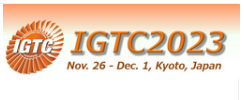
IGTC - International Gas Turbine Congress (IGTC), Kyoto, Japan, November 2023
In November 2023, B&B-AGEMA was a speaker at the IGTC about the topic: Numerical Investigation of Application of MicroMix Combustion Technology to Aero Engine Combustor

B&B-AGEMA is an independent service provider for professional power plant engineering and turbomachinery design founded in 1995. Our team of experienced experts and young engineers is dedicated to develop technology solutions for an efficient and sustainable tomorrow. For our clients in industry and research B&B-AGEMA has proved to be a strong and reliable partner with extensive expertise in flow, heat transfer and mechanical strength analyses.
Together we are engineering your visions ... to become reality.
